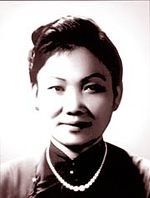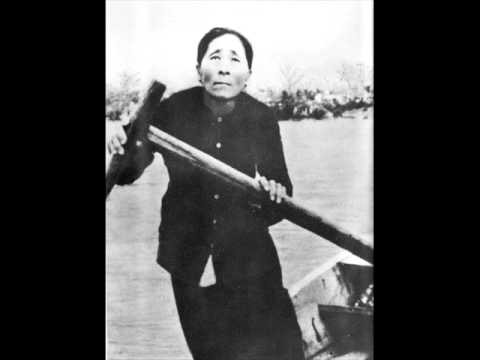(VOVworld)-With passionate and romantic melodies, Hue singing is one of three musical genres that inspired patriotism among VOV listeners during Vietnam’s resistance war against American aggressors. Tran Ngoc Bich, Mong Ung, Ton Nu Thi Ninh, Chau Loan and Hong Le are the most famous artists of Hue singing.
Due to its wide popularity and strong influence, Hue singing has been regularly broadcast on VOV. A club of Hue singing was set up in the early years of the anti-US war in Vietnam.
Musician Phan Phuc, former Head of VOV’s Ensemble says that Hue singing was one of three main genres of folksongs that VOV artists performed during the anti-US war. During the war, Hue singing and reformed opera were very influential in mobilizing enemy soldiers, many of whom were from central Quang Tri province. The melody of Hue singing was so passionate and deep that it made soldiers on the frontline put down their weapons. Musician Phan Phuc said: “At that time, Hue singing could only be heard on VOV. Vietnamese people listened to the radio to get the latest information. They didn’t listen to the enemy radio. So, we decided to play Hue singing on the radio. Our soldiers listened to Radio and Hue singing before going to the battlefield. Music including Hue singing was considered spiritual food for our people and soldiers”.
At that time, Chau Loan and Hong Le were among the famous artists performing Hue singing. Chau Loan, a native of Vinh Linh district, Quang Tri province, was the most popular artist thanks to her beautiful voice. She incorporated Hue music into poem creating passions and romance for Hue singing. They include the songs “30 years we have the Party”, “Song for 1961 spring” and “Mother Suot”.

Hue singing artist Chau Loan
|
Emeritus Artist Dao Quy Duy said that since the Hue singing club was set up in 1955, Chau Loan’s voice has moved the hearts of people living on both sides of the Hien Luong river, which was dividing line between the north and the south during the war. Duy said: “At that time, people from Hien Luong bridge to Tung Luat wharf all came to see our performance. Some of the audiences were from the north. On the road from Hien Luong bridge to Tung Luat wharf, there was a station to exchange police between the two sides every week. Police of the Southern Republic were on duty at Tung Luat station on the day, VOV artists came to perform. The Chief of Tung Luat station did not want his soldiers to listen to the performance, but the soldiers managed to get out to see artist Chau Loan and listen to Hue singing.”

Mother Suot |
Hong Duyen was another popular artist during the war. She joined the VOV Ensemble in 1965. With her central Quang Binh accent, she inspired a large audience all over the central region. She married to Emeritus Artist Dao Quy Duy partly because he shared her love for Hue singing. She said: “At that time, we often gave performances throughout the central region. The war was very severe then. We performed at artillery fortresses. During the wartime, everyone had to work very hard and so did we. We recorded songs day and night for radio broadcasts. Hue singing was very popular then”.
Hue singing helped to unite the two parts of the country. People on both sides of the front listened to the same passionate songs, which inspired them to put down their weapons and unite.